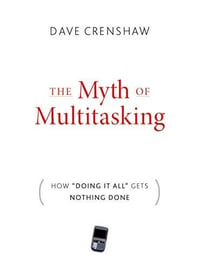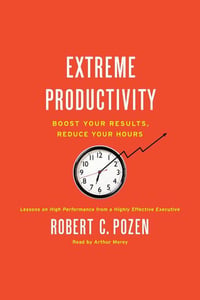Or, are you a “10”? You can easily split your focus into two different areas, and complete both tasks quickly and error free. Or are you somewhere in between? First, let’s make sure we are on the same page.
What Exactly is Multitasking?
The word multitasking tends to encompass many different scenarios. According to Dave Crenshaw in The Myth of Multitasking, when we talk about multitasking we are actually talking about either switchtasking or background tasking.

- Multitasking – The appearance of doing two tasks at once.
- Switchtasking – Switching back and forth between two tasks.
- Background tasking – Performing two or more tasks where only one requires mental effort.
- Solotasking – Performing one task at a time. (The opposite of multitasking!)
Robert Pozen, author of Extreme Productivity – Boost Your Results, Reduce Your Hours, credits much of his ability to excel in a business environment to being a strong multitasker.

Yet, recent experiments suggest it can take between 75% – 100% longer to complete two tasks at once than to complete each task separately. This is due to the time it takes your brain to transition from one idea to another.
The question remains, “Should you – or should you not – multitask?” This isn’t a clear black and white issue, but one with a cloudy gray area.
Many successful time managers, such as Robert Pozen, have perfected the art of background tasking.
- Reading a book while watching the news. At first this may seem impossible – but if the only part of the news you are interested in is a story on your local elementary school – you can read a book and then shift your attention to the news when this story comes on.
- Listening to a podcast while reading reports. Again, if the only part of the podcast you are interested in is on social media marketing, you can read the reports, and then listen during the applicable part of the presentation.
- Signing documents while actively participating in a conference call. Now, for this to work efficiently, you cannot READ the documents, only sign them. Otherwise, this activity turns into switchtasking.
Multitasking Becomes Less Effective When You Complete the Tasks Using Switchtasking.
You switch your focus from one task to the next and back again (and again, and again). The accuracy will decrease and / or the time it takes to complete each task increases.
- Answering email while talking on the phone. The person on the other end of the phone realizes they do not have your full attention and you miss important parts of the conversation.
- Actively participating in a meeting while creating talking points for a presentation scheduled for later in the day. As soon as your focus switches to creating talking points, you are no longer actively participating in the meeting.
- Working on a budget and answering questions as people come into your office. Each time you stop to answer a question; it takes time to get back into the flow of creating the budget.
We know time management strategies are simple to understand, yet are not necessarily easy to implement. It is a journey . . . and success is often measured by "is this day better than yesterday"?
Now that you can differentiate between the different types of multitasking, what is now possible? Will you continue each day the same as before your read this article, or are you going to implement something different?




